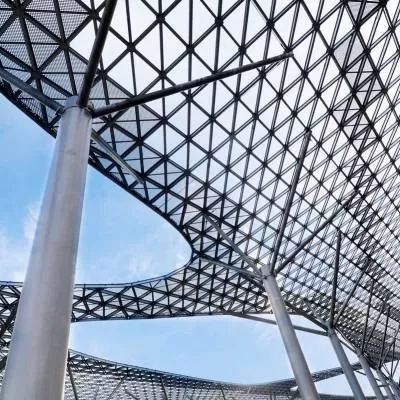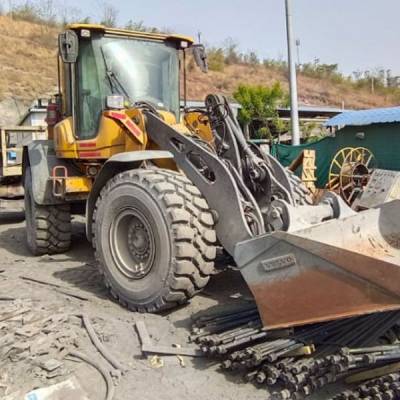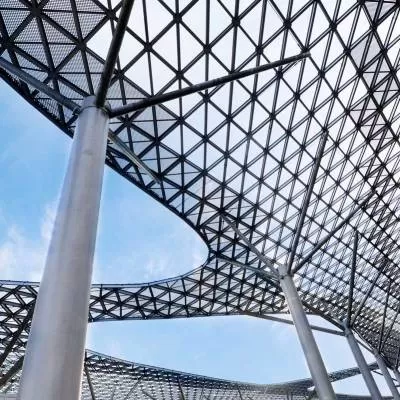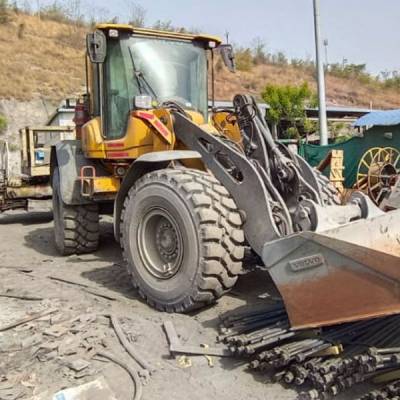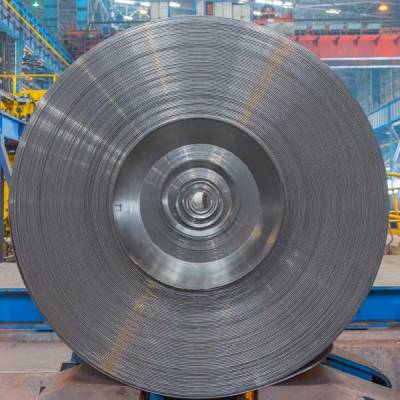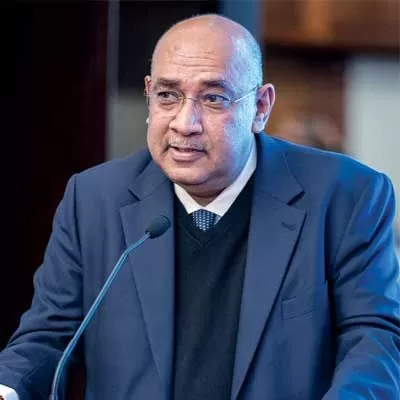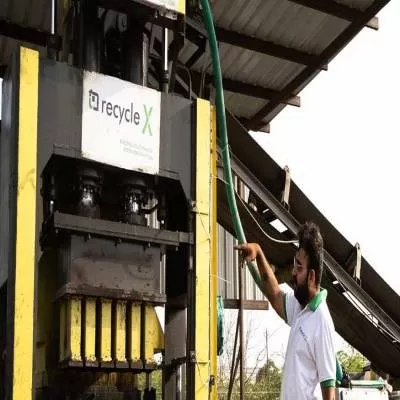- Home
- Infrastructure Urban
- ECONOMY & POLICY
- India Inc - Living on hope street

India Inc - Living on hope street
The urgency of the situation could not have been overemphasised. A falling rupee, accusations galore of government minders being mired in scams, not to mention policy paralysis, project bottlenecks, growing public discontent and the spectre of general elections looming large' Last month, six days before a tepid 66th Independence Day celebrations got under way, 15 wise men representing both the private sector and the Planning arm of the government - got together at the CW Round Table Conference in New Delhi to deliberate on the way forward to give India Inc's $1 trillion infrastructure programme a much needed push.
Incidentally every year reportedly Rs 50,000 crore are lost due to delays in executing projects across various sectors'BUT this may not quite be 'the worst of times', as a certain gent called Charles Dickens once declared.
And just as the doomsayers thought the India Inc growth story, an artificial construct' for many development sector cynics, was about to be consigned by its own self image, there haCHARU BAHRIs been a sudden pickup in key economic data - engineering exports registering a 2.2 per cent growth over the corresponding period last year, industrial output recording its first expansion in three months at 2.6 per cent, widespread rainfall in excess of 8 per cent of the normal, pointing to a bumper crop. On the financial front too, a $50 billion bilateral currency swap agreement with Tokyo and the setting up of a $100 billion fund by BRICS (Brazil, Russia, India, China and South Africa) nations to steady currency markets have somehow managed to keep national sentiment pretty much intact.
There is now a flurry of activity in the corridors of power in New Delhi. Clear about the positive domino effect of boosting infrastructure development on business sentiment in a slowing economy, the Cabinet Committee on Investment (CCI) recently asked the ministries of power, coal and highways to give the nod to as many as 36 infrastructure projects stuck owing to delays in various sanctions. Set up by the Prime Minister's Office at the start of 2013, the CCI had already cleared 171 projects worth Rs 1.69 lakh crore by early August. Meanwhile Parliament has given its approval to the Land Acquisition Bill and the Pension Bill which aims to create a regulator for the sector.
Going by the eagerness with which industry has received these actions, even so little coming so late is to be welcomed. Because the sooner hard decisions get taken, the earlier the industry will have a pipeline of projects to lift it out of the no-growth rut. It now looks like the previously sombre mood has somewhat given way to hope across India's infrastructure sector landscape notwithstanding Reserve Bank of India governor Raghuram Rajan's 'tough' reforms on arrival at the helm.
"A spate of project clearances today will compensate for the drop in the turnover of companies only by next year, given the approximately 18-month lag between project implementation and improvement in top lines," observes Arun Karambelkar, President & Whole Time Director, HCC. "A number of large ticket projects getting cleared augurs well for the industry sentiment. Of course, since there is a huge time lag between clearance and the actual execution of projects, the real benefit in terms of cash generation will only come at a much later date," concurs Nirav Shah, Head - ECG & IFG, HDFC Bank.
Turning tide
Considering elections are around the corner, 'now' is the perfect time for quick decision-making to get things moving. Once elections are announced and the code of conduct comes into force, everything will come to a grinding halt till the new government starts to function. Little wonder then, that the construction sector is hoping against hope for a revival across its various segments: highways, airports, ports, locomotive, power, real estate and water.
But the big question is: is the tide genuinely turning? Or is this just an illusion of movement?
One thing is certainly evident -û the United Progressive Alliance government is now in action mode. According to Vinayak Chatterjee, Chairman and Managing Director of Feedback Infra, construction projects worth Rs.150,000 crore are expected to take off between now and mid-2014. There is also the promise of movement on the part of companies like Anil Ambani's group companies like Reliance Power -û which is expected to begin work on the Tilaiyya UMPP shortly -û and Reliance Infrastructure, which expects all of its 14 projects, including the Mumbai metro project's first phase, to start generating revenue by the end of the current financial year. The company is also setting up a 5 million tonne cement manufacturing facility.
So it is with the Senior Ambani. Mukesh Ambani's Reliance Industries is on track to double its power genera-¡-ûting capacity to 5,000 MW in a year despite the problems ailing the sector. Meanwhile, as if to disprove any impression of an economic slowdown, Kumaramangalam Birla's UltraTech Cement has gone and acquired Jaiprakash Associates' cement assets to bolster production capacities. It is easy to see therefore why the mood in the infrastructure sector is positive.
"I believe the worst is over," declares TV Karthikeyan, CFO, L&T Infrastructure Development Projects Ltd (L&TIDPL). "India is far too big and has too much potential to be stopped for a prolonged period of time. Getting growth back on track is a matter of getting our act together, and that seems to be beginning to happen. At least a flurry of activity has gotten underway and the intention to reverse the slowdown is palpable."
Consider the government's ambitious infrastructure targets for the current fiscal: two new international airports projects are slated for Bhubaneswar and Imphal and eight greenfield airports are to be set up in PPP mode in Navi Mumbai, Juhu (Mumbai), Goa, Kannur, Pune (Rajguru Nagar Chakan), Sriperumbudur, Bellary and Raigarh. As many as 50 new low-cost airports are proposed to be created in Andhra Pradesh, Jharkhand, Bihar, Punjab, Uttar Pradesh, Arunachal Pradesh, Assam, Madhya Pradesh, Rajasthan and Maharashtra.
Two new major ports have been given the nod, at Sagar in West Bengal and Durgarajapatnam in Andhra Pradesh. While the new port in West Bengal will have a capacity of 54 mtpa, the one in Andhra Pradesh will have a capacity of around 50 mtpa. An elevated rail corridor is proposed for Mumbai. Two locomotive projects are on the anvil and work on the Eastern-Dedicated Freight Corridor is sought to be sped up. A target of 5,000 km of roads and highways has been set and 1,295 km of the roads are in the OMT (operate, maintain and transfer) mode. On the power front, the government has committed to improve generation and transmi-ssion capacity and address shortages in fuel supply.
It all sounds good. But is the government genuinely in corrective mode? Is decisive action on the ground, in policy and bidding review, happening to ensure ambitious targets are achieved? Here's a detailed look at the power and highways sectors, which have courted more controversy in recent times, and a snapshot of the real-estate sector.
Power impetus
Of the 36 projects the CCI recently notified for clearance within 60 days, at least half are power projects. "The majority of these projects are PPPs in the thermal and industrial segments, which form part of the larger infrastructure sector," observes Karambelkar.
Its good going for a sector that has recently made headlines for all the wrong reasons: Coalgate, the coal allocation scam, and fuel supply shortages. Much less attention has been paid to positive measures in this area, and there have been some. Setting the record straight, Rajesh Samson, Partner - Transaction Advisory Services, Ernst & Young LLP, suggests that a quiet revolution is in progress in the background in the conventional power generation sector, and is somehow getting ignored in the flurry of negativity around infrastructure in general. He suggests that moves towards stepping up the output of coal production, coal imports to address the shortage of fuel, allowing increased cost of imported fuel as pass-through in tariffs, pushing through much needed increase in retail tariffs and ensuring payments by defaulting states to power companies as measures will help put the sector back on the path of growth.
"Bidding behaviour in the power generation and transmission sectors has already been corrected, and this addresses one of the key problems that we've observed across the major infrastructure sectors over the past few years, which was irresponsible behaviour by the private sector in pricing risks in such projects is unsustainably low," he says.
"Renewable energy is another sector driven by sound policies and with tremendous scope to expand. Currently, it is one of the few infrastructure sectors where investors and lenders are very actively interested."
Highway to recovery
Industry voices say recent initiatives to get infrastructure development back on the track barely scratch the surface of what needs to be done. "The government still needs to take definitive steps to award core infrastructure projects in hydel power, roads and nuclear power," remarks Karambelkar. "The project awarding rate has been on the decline in these areas. For instance, very few hydel power projects have been awarded in the past two years. A clearer approach is needed on the proposed award of 4,000 km in the EPC mode."
Despite a pressing need to strengthen the country's roads and highways network, the nodal agency for the sector, the NHAI, has come under flak for the way in which it functions. Samson is somewhat concerned with the direction of policy, implementation and financing in the highway space. "This sector requires some significant intervention to correct itself," he suggests. "It is vital that some action be taken on BOT projects that are stalled. And rather than the entire machinery focussing on analysing what has gone wrong in the past, and whether the fault lies with the government or private sector, the Ministry and NHAI will have to take an out-of-the box approach and undertake a one-time sector cleanup."
Also, massive delays between the time developers achieve financial closure and NHAI grants them the right of way for work to start onsite has spurred a clamour for better preparedness on the part of the nodal agency. "We have suggested that NHAI procures a significant portion of land before it brings projects to the table, so that developers are almost ready to start after they achieve financial closure," shares Karthikeyan. As things currently stand, even industry stalwart L&TIDPL is facing the suboptimal situation of keeping teams in a prolonged state of readiness for projects that are delayed and dealing with inflation in the lag period.
Then, is there even a glimmer of hope for a turnaround? Karthikeyan believes so: "We're seeing signs that the bureaucracy and government machinery have realised they need to get their act together."
What are these signs? "For starters, the NHAI has actually started to reach out to developers and bankers to devise workable solutions for current challenges such as rescheduling premium payments, understanding project cost as determined by lenders at the time of financial closure, and considering the implications on termination payment receivable from NHAI in the eventuality that projects are terminated and settlements need to be made," explains Karthikeyan. "The concession authorities are also waking up to the fact that developers base their bids on certain assumptions about the macroeconomic situation and, barring a few large developers, they lack the capacity to bear drastic changes in this situation. Different arms of the government are now engaging with the industry in finding workable solutions to address current problems and draw up a fresh blueprint to accelerate infrastructure development."
In a sense, bidders put their trust in prevailing economic policies, which they expect to continue. So, the bigger picture is one of confidence in the government and its commitment to consistent policies and practices, not only in the roads and highways sector but across the infra space. "It's quintessential to get trust back in the system if we are to attract foreign capital," opines Karthikeyan.
Balanced approach
Positive government action is vital to get the construction sector on its feet again. "Rs 7 lakh crore worth of projects are stuck for want of land and environmental clearances and litigation or arbitration," says Karambelkar. "Clearing these hurdles is vital to infuse capital in the sector." In view of the current account deficit and the government having already spent about 65 per cent of its annual outlay, however, he is not very hopeful of the government spending the complete planned amount.
Then, even if the government speeds up regulatory approvals, where will the mega funds needed for development projects come from? "The overall bank disbursement potential during the Twelfth Five-Year plan is estimated to be worth over Rs 14 lakh crore," observes Sasidhar Chidanamarri, Industry Manager, Environment & Building Technologies Practice, Frost & Sullivan. "Banks form a vital link, especially for large infrastructure sectors such as power and roads."
For their part, banks have performed well in terms of disbursement and support to infrastructure and real-estate projects. "However, most banks have already reached the saturation limit for internally approved sector-wise norms," notes Chidanamarri. And Anil Gandhi, President, Feedback Infra, says, "Banks are over-exposed to the infrastructure development and construction sectors." Detailing the recent experience of banks financing highway projects, Samson says, "When the mood around the highway sector was at its peak, even projects that appeared unviable achieved financial closure. After the bubble burst and a spate of big ticket projects ran into controversies, banks have responded with a kind of kneejerk reaction to financing highway projects. It doesn't help that some banks are approaching their respective caps in this sector."
To add to the sorrows of bankers, a huge amount has got stuck in arbitration awards for delays owing to land clearances, natural calamities, geological challenges and local disturbances. "These setbacks have forced many companies to approach banks to restructure their loans, which in turn has severely affected the cycle of investment in the infrastructure sector," says Karambelkar.
"Then, is it surprising that banks are taking a cautious approach to committing fresh loans and several loans have been sanctioned but not distributed?"
"Now, banks are reluctant to offer support to infrastructure projects mainly owing to the difficulties in recovering payments owing to delayed projects and increasing the portfolio stress," adds Chidanamarri.
Understandably, achieving financial closure for PPP projects is becoming tougher, and finance promises to remain a challenge in the near future as banks and financial institutions look to protect their own interests. For instance, SREI, an RBI-recognised infrastructure finance company and a Government of India-recognised public financial institution, is focusing on healthy bottom lines rather than top lines in this slow period. The company has consciously moderated disbursements in the last fiscal and in Q1 this fiscal, through which it has been able to increase its profit after tax. But there are positives. For starters, banks have been proactive in approaching the government and other agencies to identify delayed projects and push for faster clearances, and speed up the litigation and arbitration processes that would infuse much required capital into the sector. Given the situation, Shailesh Pathak, President, Srei Infrastructure Finance Ltd, sees now as a good time to roll out government-funded projects, including using the huge cash reserves of public-sector units (PSUs). "If a flurry of government-financed construction projects could start on-site construction activity, this would lead to jobs, as well as rising demand for inputs such as materials and equipment," he points out. "This could be a virtuous cycle. One positive is that four large states will complete elections by November 2013 and could award contracts by February-March, much before the general elections at the national level."
The good news is that it's already happening. "The Finance Ministry is now focussing on PSUs that have surplus cash that can be invested in infrastructure," observes Chidanamarri. "If these idle funds are not invested in the economy, the PSUs are asked to pay a higher dividend. There is an increased focus on clearing projects that are a part of the capex plans of PSUs."
Government owned organisations like Housing and Urban Development Corporation (HUDCO) are looking to raise funds from the market through launch of tax free bonds these will be used to support infrastructure projects. For instance, it has taken 19.9 per cent equity in the Delhi Mumbai Industrial Corridor and is hoping to contribute to the development of other corridors being planned like Bengaluru-Chennai. "We are confident that the future will be promising," says VP Baligar, Chairman and Managing Director, HUDCO. "We are increasingly looking to raise our funding profile through support to projects like water supply, small towns, airports, metro lines, highways and ports."
Realty reality
Real estate stands apart from infrastructure but is as integral a part of the construction industry and the second largest contributor to the country's GDP. Is it standing on solid or shaky ground? Real estate is facing "funding formalities" arising from "the reluctance of banks to fund real-estate projects owing to the difficulties involved in recovering from the promoters," in Chidanamarri's words.
According to the central bank's half-yearly financial stability report (July 2013), bank credit to the housing sector came down to 9.5 per cent in FY13, from 13.3 per cent in FY08. Clearly, banks are more closely evaluating the credit worthiness of the developer now. As a result, demand exists only for rightly priced real estate from reputed companies -û such buyers are mostly end users. Nevertheless, Brotin Banerjee, Managing Director and CEO, Tata Housing Development Company, notes that the close scrutiny of loan requests by banks has had one positive outcome: NPAs in the home loan category have fallen in the past three years. "Another positive in FY2013-14 is government initiatives to promote first time and new homebuyers to invest in property," observes Banerjee. "The Union Budget 2013-14 increased the home loan exemption limit from Rs 1.5 to 2.5 lakh. The Reserve Bank of India slashed its key interest rates making home loans cheaper, the real-estate regulatory bill got approval and there have been talks of facilitating affordable housing." To some extent, these measures have moderated the drop in demand from fall in bank credit to the housing sector. At least the mood is upbeat in Tier-II cities as those limited markets have not been so affected by the tight liquidity. "Pune, Bengaluru and Chennai are also faring better than other cities because the infotech sector in those places drives the banking, financial services and insurance sectors and the consumption (FMCG, pharma, automobiles, entertainment and retail) economy," says Sanjay Kabra, CFO, Mantri Realty. "Decent job creation, in turn, is creating demand for new homes in those cities from actual end-users who are eligible for housing loans." As for pushing demand further, realtors are counting on better loan support. "However, to a large extent, this is in the industry's hands," observes Banerjee. "Loans will be forthcoming if the perception of risk involved in lending to the real estate sector is removed. For this, developers must take proactive steps to become completely transparent and follow corporate governance rules. These are top priorities for the central bank. Earlier this week, the central bank asked banks to desist from upfront disbursal of sanctioned individual housing loans to builders." Adding to healthy company policies, Navin Raheja, Chairman and Managing Director, Raheja Developers, and President, National Real Estate Development Council, emphasises that high-performing companies like Raheja sell properties only to end users or second home buyers, instead of focussing on bulk sales or underwriting entire projects. "Quality, timely delivery and transparency, always our prime motto, translate into a strong customer base and minimal defaulting customers as new home buyers are investing only with developers who focus on delivery and quality and have a sound track record."
Looking at recent central bank measures to strengthen the rupee and with the festive season around the corner, Raheja expects liquidity and, with it, real-estate markets in Tier-I cities to recover. Possibly that will change the minds of foreign investors who have been postponing their entry into India by a year or two, because of high real-estate costs, impending elections in 2014 and the sliding rupee. "We are hopeful the new RBI governor ushers in a favourable monetary policy that helps rein in inflation and soften interest rates," adds Banerjee. While reining in the slide in the rupee would be a major item on the national menu the minders of government will do well to apply their minds towards speedy execution of key infrastructure projects, solutions for which have been suggested at the CW Round Table Conference (See page 66).
Only that would invest India Inc's Growth Story and Hope Street th reality and sweet taste.
"We can see the first signs of revival in sentiments. The government has also recognised the need to fast-track reforms and is also making conscious efforts to clear the projects that have been held up for long. That has a huge cascading effect."
- Kumar Mangalam Birla, Chairman, Aditya Birla Group
"Despite the macro environment being challenging, we expect our group to perform better particularly in the infrastructure sector. We are on track to double our power generating capacity to 5,000 mw in a year despite the sector's problems."
- Anil Ambani, Chairman, Anil Dhirubhai Ambani Group
"In the last six months government had taken growth-friendly measures such as production and capacity creation. I do expect the growth rate of Indian economy to pick up in the current year and be around five to 5.5 five percent. This year we will be better than last year as agriculture growth will be higher than last year on good monsoon."
- C Rangarajan, Chairman, PMEAC
"The negativity around Indian economy has been exaggerated and is not in line with its fundamentals, but the situation, which was of panic, is now returning to rationality and equilibrium leading to growth. It (India) is going to be an economic powerhouse."
- Anand Mahindra, Chairman and Managing Director, Mahindra & Mahindra
"We need to look beyond gloom and doom. The economy will overcome the current crisis. After going through a financial turmoil for almost a year, greenshoots have appeared in the economy of late, giving a hope of recovery."
- Mukesh Ambani, Chairman, Reliance Industries
"With the availability of talent, entrepreneurial spirit and potential to leverage the technology to innovate, the country has huge potential for growth. The situation will change in the immediate future as there are initial signs of global demand picking up."
- N Chandrasekaran, CEO & Managing Director, Tata Consultancy Services
QUICK BYTES: SOMETHING TO CHEER ABOUT
India's forex reserves rose by $544.7 million during week ended 20 September 2013
Engineering exports turned positive and registered a marginal growth of 2.18 per cent to $4.68 billion compared to a year-ago
Industrial output turned around in July and recorded its first expansion -û 2.6 per cent -û in three months
Retail inflation slowed to 9.52 per cent in August from 9.64 in July
Out of the 22 industry groups in the manufacturing sector, as many as 11 posted positive growth rates
Nasscom expects the IT services sector in India to grow by 13-14 per cent in 2013-14 and to touch $225 billion by 2020.
IT spending in India is projected to reach $ 71.5 billion in 2013, an increase of 7.7 per cent as compared to $ 66.4 billion projected for 2012, as per a report by Gartner.
Electrical machinery has shown the highest positive growth of 83.6 per cent
Rainfall in excess of 8 per cent of normal
Sectors to see slice of action
- Power
- Petrochemicals
- Metro rail
- Airports
- Oil and gas
- Oil and gas
- Roads
- Ports
- Dedicated Freight Corridor
- CHARU BAHRI
- CW Round Table Conference
- New Delhi
- BRICS
- Cabinet Committee on Investment
- Arun Karambelkar
- HCC
- Nirav Shah
- ECG & IFG
- HDFC Bank
- TV Karthikeyan
- L&T Infrastructure Development Projects Ltd
- Kumar Mangalam Birla
- Aditya Birla Group
- Anil Ambani
- Anil Dhirubhai Ambani Group
- C Rangarajan
- PMEAC
- Anand Mahindra
- Mahindra & Mahindra
- Mukesh Ambani
- Reliance Industries
- N Chandrasek
A combination of a good rainfall, improvements in economic indicators and the urgent rollout of stranded projects by the government bode well for India's construction sector. With such positive signals the industry is hoping the clean-up act is for good, reports CHARU BAHRI. The urgency of the situation could not have been overemphasised. A falling rupee, accusations galore of government minders being mired in scams, not to mention policy paralysis, project bottlenecks, growing public discontent and the spectre of general elections looming large' Last month, six days before a tepid 66th Independence Day celebrations got under way, 15 wise men representing both the private sector and the Planning arm of the government - got together at the CW Round Table Conference in New Delhi to deliberate on the way forward to give India Inc's $1 trillion infrastructure programme a much needed push. Incidentally every year reportedly Rs 50,000 crore are lost due to delays in executing projects across various sectors'BUT this may not quite be 'the worst of times', as a certain gent called Charles Dickens once declared. And just as the doomsayers thought the India Inc growth story, an artificial construct' for many development sector cynics, was about to be consigned by its own self image, there haCHARU BAHRIs been a sudden pickup in key economic data - engineering exports registering a 2.2 per cent growth over the corresponding period last year, industrial output recording its first expansion in three months at 2.6 per cent, widespread rainfall in excess of 8 per cent of the normal, pointing to a bumper crop. On the financial front too, a $50 billion bilateral currency swap agreement with Tokyo and the setting up of a $100 billion fund by BRICS (Brazil, Russia, India, China and South Africa) nations to steady currency markets have somehow managed to keep national sentiment pretty much intact. There is now a flurry of activity in the corridors of power in New Delhi. Clear about the positive domino effect of boosting infrastructure development on business sentiment in a slowing economy, the Cabinet Committee on Investment (CCI) recently asked the ministries of power, coal and highways to give the nod to as many as 36 infrastructure projects stuck owing to delays in various sanctions. Set up by the Prime Minister's Office at the start of 2013, the CCI had already cleared 171 projects worth Rs 1.69 lakh crore by early August. Meanwhile Parliament has given its approval to the Land Acquisition Bill and the Pension Bill which aims to create a regulator for the sector. Going by the eagerness with which industry has received these actions, even so little coming so late is to be welcomed. Because the sooner hard decisions get taken, the earlier the industry will have a pipeline of projects to lift it out of the no-growth rut. It now looks like the previously sombre mood has somewhat given way to hope across India's infrastructure sector landscape notwithstanding Reserve Bank of India governor Raghuram Rajan's 'tough' reforms on arrival at the helm. A spate of project clearances today will compensate for the drop in the turnover of companies only by next year, given the approximately 18-month lag between project implementation and improvement in top lines, observes Arun Karambelkar, President & Whole Time Director, HCC. A number of large ticket projects getting cleared augurs well for the industry sentiment. Of course, since there is a huge time lag between clearance and the actual execution of projects, the real benefit in terms of cash generation will only come at a much later date, concurs Nirav Shah, Head - ECG & IFG, HDFC Bank. Turning tide Considering elections are around the corner, 'now' is the perfect time for quick decision-making to get things moving. Once elections are announced and the code of conduct comes into force, everything will come to a grinding halt till the new government starts to function. Little wonder then, that the construction sector is hoping against hope for a revival across its various segments: highways, airports, ports, locomotive, power, real estate and water. But the big question is: is the tide genuinely turning? Or is this just an illusion of movement? One thing is certainly evident -û the United Progressive Alliance government is now in action mode. According to Vinayak Chatterjee, Chairman and Managing Director of Feedback Infra, construction projects worth Rs.150,000 crore are expected to take off between now and mid-2014. There is also the promise of movement on the part of companies like Anil Ambani's group companies like Reliance Power -û which is expected to begin work on the Tilaiyya UMPP shortly -û and Reliance Infrastructure, which expects all of its 14 projects, including the Mumbai metro project's first phase, to start generating revenue by the end of the current financial year. The company is also setting up a 5 million tonne cement manufacturing facility. So it is with the Senior Ambani. Mukesh Ambani's Reliance Industries is on track to double its power genera-¡-ûting capacity to 5,000 MW in a year despite the problems ailing the sector. Meanwhile, as if to disprove any impression of an economic slowdown, Kumaramangalam Birla's UltraTech Cement has gone and acquired Jaiprakash Associates' cement assets to bolster production capacities. It is easy to see therefore why the mood in the infrastructure sector is positive. I believe the worst is over, declares TV Karthikeyan, CFO, L&T Infrastructure Development Projects Ltd (L&TIDPL). India is far too big and has too much potential to be stopped for a prolonged period of time. Getting growth back on track is a matter of getting our act together, and that seems to be beginning to happen. At least a flurry of activity has gotten underway and the intention to reverse the slowdown is palpable. Consider the government's ambitious infrastructure targets for the current fiscal: two new international airports projects are slated for Bhubaneswar and Imphal and eight greenfield airports are to be set up in PPP mode in Navi Mumbai, Juhu (Mumbai), Goa, Kannur, Pune (Rajguru Nagar Chakan), Sriperumbudur, Bellary and Raigarh. As many as 50 new low-cost airports are proposed to be created in Andhra Pradesh, Jharkhand, Bihar, Punjab, Uttar Pradesh, Arunachal Pradesh, Assam, Madhya Pradesh, Rajasthan and Maharashtra. Two new major ports have been given the nod, at Sagar in West Bengal and Durgarajapatnam in Andhra Pradesh. While the new port in West Bengal will have a capacity of 54 mtpa, the one in Andhra Pradesh will have a capacity of around 50 mtpa. An elevated rail corridor is proposed for Mumbai. Two locomotive projects are on the anvil and work on the Eastern-Dedicated Freight Corridor is sought to be sped up. A target of 5,000 km of roads and highways has been set and 1,295 km of the roads are in the OMT (operate, maintain and transfer) mode. On the power front, the government has committed to improve generation and transmi-ssion capacity and address shortages in fuel supply. It all sounds good. But is the government genuinely in corrective mode? Is decisive action on the ground, in policy and bidding review, happening to ensure ambitious targets are achieved? Here's a detailed look at the power and highways sectors, which have courted more controversy in recent times, and a snapshot of the real-estate sector. Power impetus Of the 36 projects the CCI recently notified for clearance within 60 days, at least half are power projects. The majority of these projects are PPPs in the thermal and industrial segments, which form part of the larger infrastructure sector, observes Karambelkar. Its good going for a sector that has recently made headlines for all the wrong reasons: Coalgate, the coal allocation scam, and fuel supply shortages. Much less attention has been paid to positive measures in this area, and there have been some. Setting the record straight, Rajesh Samson, Partner - Transaction Advisory Services, Ernst & Young LLP, suggests that a quiet revolution is in progress in the background in the conventional power generation sector, and is somehow getting ignored in the flurry of negativity around infrastructure in general. He suggests that moves towards stepping up the output of coal production, coal imports to address the shortage of fuel, allowing increased cost of imported fuel as pass-through in tariffs, pushing through much needed increase in retail tariffs and ensuring payments by defaulting states to power companies as measures will help put the sector back on the path of growth. Bidding behaviour in the power generation and transmission sectors has already been corrected, and this addresses one of the key problems that we've observed across the major infrastructure sectors over the past few years, which was irresponsible behaviour by the private sector in pricing risks in such projects is unsustainably low, he says. Renewable energy is another sector driven by sound policies and with tremendous scope to expand. Currently, it is one of the few infrastructure sectors where investors and lenders are very actively interested. Highway to recovery Industry voices say recent initiatives to get infrastructure development back on the track barely scratch the surface of what needs to be done. The government still needs to take definitive steps to award core infrastructure projects in hydel power, roads and nuclear power, remarks Karambelkar. The project awarding rate has been on the decline in these areas. For instance, very few hydel power projects have been awarded in the past two years. A clearer approach is needed on the proposed award of 4,000 km in the EPC mode. Despite a pressing need to strengthen the country's roads and highways network, the nodal agency for the sector, the NHAI, has come under flak for the way in which it functions. Samson is somewhat concerned with the direction of policy, implementation and financing in the highway space. This sector requires some significant intervention to correct itself, he suggests. It is vital that some action be taken on BOT projects that are stalled. And rather than the entire machinery focussing on analysing what has gone wrong in the past, and whether the fault lies with the government or private sector, the Ministry and NHAI will have to take an out-of-the box approach and undertake a one-time sector cleanup. Also, massive delays between the time developers achieve financial closure and NHAI grants them the right of way for work to start onsite has spurred a clamour for better preparedness on the part of the nodal agency. We have suggested that NHAI procures a significant portion of land before it brings projects to the table, so that developers are almost ready to start after they achieve financial closure, shares Karthikeyan. As things currently stand, even industry stalwart L&TIDPL is facing the suboptimal situation of keeping teams in a prolonged state of readiness for projects that are delayed and dealing with inflation in the lag period. Then, is there even a glimmer of hope for a turnaround? Karthikeyan believes so: We're seeing signs that the bureaucracy and government machinery have realised they need to get their act together. What are these signs? For starters, the NHAI has actually started to reach out to developers and bankers to devise workable solutions for current challenges such as rescheduling premium payments, understanding project cost as determined by lenders at the time of financial closure, and considering the implications on termination payment receivable from NHAI in the eventuality that projects are terminated and settlements need to be made, explains Karthikeyan. The concession authorities are also waking up to the fact that developers base their bids on certain assumptions about the macroeconomic situation and, barring a few large developers, they lack the capacity to bear drastic changes in this situation. Different arms of the government are now engaging with the industry in finding workable solutions to address current problems and draw up a fresh blueprint to accelerate infrastructure development. In a sense, bidders put their trust in prevailing economic policies, which they expect to continue. So, the bigger picture is one of confidence in the government and its commitment to consistent policies and practices, not only in the roads and highways sector but across the infra space. It's quintessential to get trust back in the system if we are to attract foreign capital, opines Karthikeyan. Balanced approach Positive government action is vital to get the construction sector on its feet again. Rs 7 lakh crore worth of projects are stuck for want of land and environmental clearances and litigation or arbitration, says Karambelkar. Clearing these hurdles is vital to infuse capital in the sector. In view of the current account deficit and the government having already spent about 65 per cent of its annual outlay, however, he is not very hopeful of the government spending the complete planned amount. Then, even if the government speeds up regulatory approvals, where will the mega funds needed for development projects come from? The overall bank disbursement potential during the Twelfth Five-Year plan is estimated to be worth over Rs 14 lakh crore, observes Sasidhar Chidanamarri, Industry Manager, Environment & Building Technologies Practice, Frost & Sullivan. Banks form a vital link, especially for large infrastructure sectors such as power and roads. For their part, banks have performed well in terms of disbursement and support to infrastructure and real-estate projects. However, most banks have already reached the saturation limit for internally approved sector-wise norms, notes Chidanamarri. And Anil Gandhi, President, Feedback Infra, says, Banks are over-exposed to the infrastructure development and construction sectors. Detailing the recent experience of banks financing highway projects, Samson says, When the mood around the highway sector was at its peak, even projects that appeared unviable achieved financial closure. After the bubble burst and a spate of big ticket projects ran into controversies, banks have responded with a kind of kneejerk reaction to financing highway projects. It doesn't help that some banks are approaching their respective caps in this sector. To add to the sorrows of bankers, a huge amount has got stuck in arbitration awards for delays owing to land clearances, natural calamities, geological challenges and local disturbances. These setbacks have forced many companies to approach banks to restructure their loans, which in turn has severely affected the cycle of investment in the infrastructure sector, says Karambelkar. Then, is it surprising that banks are taking a cautious approach to committing fresh loans and several loans have been sanctioned but not distributed? Now, banks are reluctant to offer support to infrastructure projects mainly owing to the difficulties in recovering payments owing to delayed projects and increasing the portfolio stress, adds Chidanamarri. Understandably, achieving financial closure for PPP projects is becoming tougher, and finance promises to remain a challenge in the near future as banks and financial institutions look to protect their own interests. For instance, SREI, an RBI-recognised infrastructure finance company and a Government of India-recognised public financial institution, is focusing on healthy bottom lines rather than top lines in this slow period. The company has consciously moderated disbursements in the last fiscal and in Q1 this fiscal, through which it has been able to increase its profit after tax. But there are positives. For starters, banks have been proactive in approaching the government and other agencies to identify delayed projects and push for faster clearances, and speed up the litigation and arbitration processes that would infuse much required capital into the sector. Given the situation, Shailesh Pathak, President, Srei Infrastructure Finance Ltd, sees now as a good time to roll out government-funded projects, including using the huge cash reserves of public-sector units (PSUs). If a flurry of government-financed construction projects could start on-site construction activity, this would lead to jobs, as well as rising demand for inputs such as materials and equipment, he points out. This could be a virtuous cycle. One positive is that four large states will complete elections by November 2013 and could award contracts by February-March, much before the general elections at the national level. The good news is that it's already happening. The Finance Ministry is now focussing on PSUs that have surplus cash that can be invested in infrastructure, observes Chidanamarri. If these idle funds are not invested in the economy, the PSUs are asked to pay a higher dividend. There is an increased focus on clearing projects that are a part of the capex plans of PSUs. Government owned organisations like Housing and Urban Development Corporation (HUDCO) are looking to raise funds from the market through launch of tax free bonds these will be used to support infrastructure projects. For instance, it has taken 19.9 per cent equity in the Delhi Mumbai Industrial Corridor and is hoping to contribute to the development of other corridors being planned like Bengaluru-Chennai. We are confident that the future will be promising, says VP Baligar, Chairman and Managing Director, HUDCO. We are increasingly looking to raise our funding profile through support to projects like water supply, small towns, airports, metro lines, highways and ports. Realty reality Real estate stands apart from infrastructure but is as integral a part of the construction industry and the second largest contributor to the country's GDP. Is it standing on solid or shaky ground? Real estate is facing funding formalities arising from the reluctance of banks to fund real-estate projects owing to the difficulties involved in recovering from the promoters, in Chidanamarri's words. According to the central bank's half-yearly financial stability report (July 2013), bank credit to the housing sector came down to 9.5 per cent in FY13, from 13.3 per cent in FY08. Clearly, banks are more closely evaluating the credit worthiness of the developer now. As a result, demand exists only for rightly priced real estate from reputed companies -û such buyers are mostly end users. Nevertheless, Brotin Banerjee, Managing Director and CEO, Tata Housing Development Company, notes that the close scrutiny of loan requests by banks has had one positive outcome: NPAs in the home loan category have fallen in the past three years. Another positive in FY2013-14 is government initiatives to promote first time and new homebuyers to invest in property, observes Banerjee. The Union Budget 2013-14 increased the home loan exemption limit from Rs 1.5 to 2.5 lakh. The Reserve Bank of India slashed its key interest rates making home loans cheaper, the real-estate regulatory bill got approval and there have been talks of facilitating affordable housing. To some extent, these measures have moderated the drop in demand from fall in bank credit to the housing sector. At least the mood is upbeat in Tier-II cities as those limited markets have not been so affected by the tight liquidity. Pune, Bengaluru and Chennai are also faring better than other cities because the infotech sector in those places drives the banking, financial services and insurance sectors and the consumption (FMCG, pharma, automobiles, entertainment and retail) economy, says Sanjay Kabra, CFO, Mantri Realty. Decent job creation, in turn, is creating demand for new homes in those cities from actual end-users who are eligible for housing loans. As for pushing demand further, realtors are counting on better loan support. However, to a large extent, this is in the industry's hands, observes Banerjee. Loans will be forthcoming if the perception of risk involved in lending to the real estate sector is removed. For this, developers must take proactive steps to become completely transparent and follow corporate governance rules. These are top priorities for the central bank. Earlier this week, the central bank asked banks to desist from upfront disbursal of sanctioned individual housing loans to builders. Adding to healthy company policies, Navin Raheja, Chairman and Managing Director, Raheja Developers, and President, National Real Estate Development Council, emphasises that high-performing companies like Raheja sell properties only to end users or second home buyers, instead of focussing on bulk sales or underwriting entire projects. Quality, timely delivery and transparency, always our prime motto, translate into a strong customer base and minimal defaulting customers as new home buyers are investing only with developers who focus on delivery and quality and have a sound track record. Looking at recent central bank measures to strengthen the rupee and with the festive season around the corner, Raheja expects liquidity and, with it, real-estate markets in Tier-I cities to recover. Possibly that will change the minds of foreign investors who have been postponing their entry into India by a year or two, because of high real-estate costs, impending elections in 2014 and the sliding rupee. We are hopeful the new RBI governor ushers in a favourable monetary policy that helps rein in inflation and soften interest rates, adds Banerjee. While reining in the slide in the rupee would be a major item on the national menu the minders of government will do well to apply their minds towards speedy execution of key infrastructure projects, solutions for which have been suggested at the CW Round Table Conference (See page 66). Only that would invest India Inc's Growth Story and Hope Street th reality and sweet taste. We can see the first signs of revival in sentiments. The government has also recognised the need to fast-track reforms and is also making conscious efforts to clear the projects that have been held up for long. That has a huge cascading effect. - Kumar Mangalam Birla, Chairman, Aditya Birla Group Despite the macro environment being challenging, we expect our group to perform better particularly in the infrastructure sector. We are on track to double our power generating capacity to 5,000 mw in a year despite the sector's problems. - Anil Ambani, Chairman, Anil Dhirubhai Ambani Group In the last six months government had taken growth-friendly measures such as production and capacity creation. I do expect the growth rate of Indian economy to pick up in the current year and be around five to 5.5 five percent. This year we will be better than last year as agriculture growth will be higher than last year on good monsoon. - C Rangarajan, Chairman, PMEAC The negativity around Indian economy has been exaggerated and is not in line with its fundamentals, but the situation, which was of panic, is now returning to rationality and equilibrium leading to growth. It (India) is going to be an economic powerhouse. - Anand Mahindra, Chairman and Managing Director, Mahindra & Mahindra We need to look beyond gloom and doom. The economy will overcome the current crisis. After going through a financial turmoil for almost a year, greenshoots have appeared in the economy of late, giving a hope of recovery. - Mukesh Ambani, Chairman, Reliance Industries With the availability of talent, entrepreneurial spirit and potential to leverage the technology to innovate, the country has huge potential for growth. The situation will change in the immediate future as there are initial signs of global demand picking up. - N Chandrasekaran, CEO & Managing Director, Tata Consultancy Services QUICK BYTES: SOMETHING TO CHEER ABOUT India's forex reserves rose by $544.7 million during week ended 20 September 2013 Engineering exports turned positive and registered a marginal growth of 2.18 per cent to $4.68 billion compared to a year-ago Industrial output turned around in July and recorded its first expansion -û 2.6 per cent -û in three months Retail inflation slowed to 9.52 per cent in August from 9.64 in July Out of the 22 industry groups in the manufacturing sector, as many as 11 posted positive growth rates Nasscom expects the IT services sector in India to grow by 13-14 per cent in 2013-14 and to touch $225 billion by 2020. IT spending in India is projected to reach $ 71.5 billion in 2013, an increase of 7.7 per cent as compared to $ 66.4 billion projected for 2012, as per a report by Gartner. Electrical machinery has shown the highest positive growth of 83.6 per cent Rainfall in excess of 8 per cent of normal Sectors to see slice of action Power Petrochemicals Metro rail Airports Oil and gas Oil and gas Roads Ports Dedicated Freight Corridor


